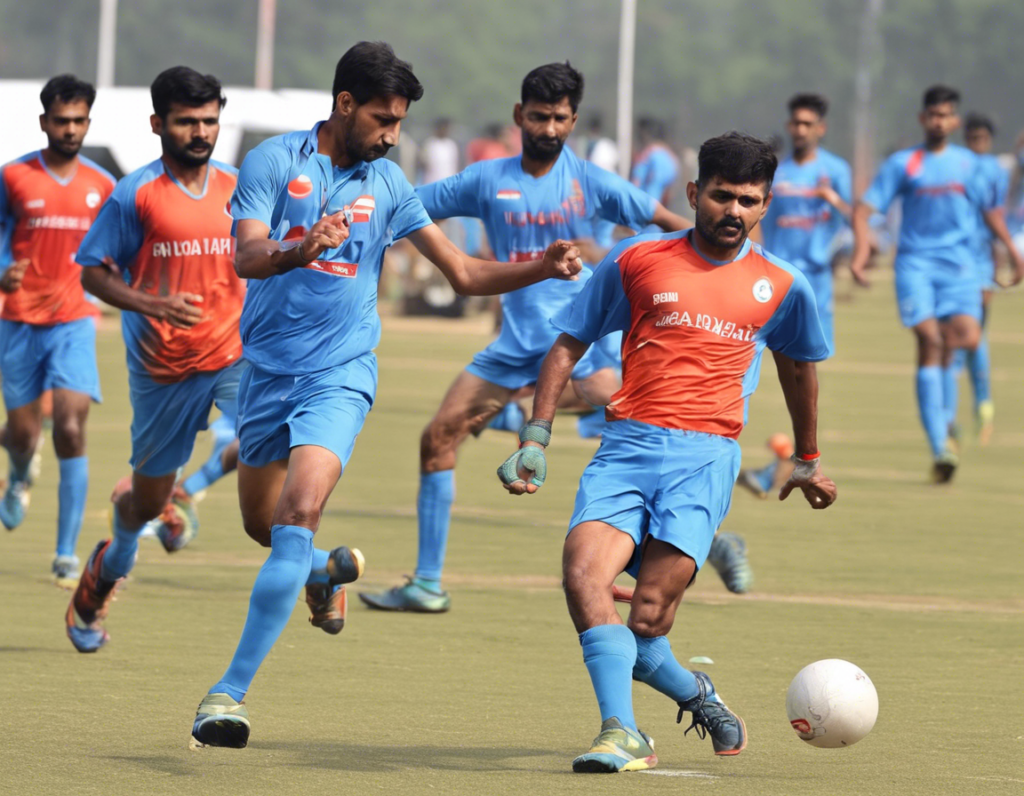The Durand Cup is one of the oldest and most prestigious football tournaments in India. Established in 1888, it has a rich history and tradition that has helped shape the landscape of Indian football over the years. The tournament is named after Sir Henry Mortimer Durand, who was a British diplomat and the Foreign Secretary of British India at the time.
History of the Durand Cup
The Durand Cup was first held in 1888, making it the third oldest football competition in the world, after the English FA Cup and the Scottish Cup. The tournament was initially started as a means to foster camaraderie among British and Indian military personnel stationed in India. Over the years, it has grown in stature and popularity, attracting top clubs and military teams from across the country.
Format of the Tournament
The tournament traditionally follows a knockout format, where teams compete in single-elimination matches until a winner is crowned. In recent years, the format has been revamped to include group stages as well, adding an extra layer of competition and excitement to the tournament.
Significance of the Durand Cup
The Durand Cup holds a special place in the hearts of Indian football fans as it has been instrumental in showcasing and nurturing talent in the country. It has served as a platform for young players to make a name for themselves and has been a breeding ground for future stars of Indian football. Many legendary players have graced the Durand Cup over the years, leaving behind a rich legacy that continues to inspire aspiring footballers in India.
Notable Winners and Controversies
Over the years, several top clubs and military teams have clinched the prestigious Durand Cup title. Teams like Mohun Bagan, East Bengal, and Churchill Brothers have a rich history of success in the tournament. However, the Durand Cup has not been without its controversies, with disputes over scheduling, refereeing decisions, and allegations of match-fixing marring its reputation at times.
The Future of the Durand Cup
Despite its long and storied history, the Durand Cup has faced challenges in recent years, including declining viewership and sponsorship issues. However, efforts are being made to revitalize the tournament and bring it back to its former glory. With the emergence of new football leagues and increased interest in the sport in India, there is hope that the Durand Cup will continue to thrive and evolve in the years to come.
Conclusion
The Durand Cup remains a revered institution in Indian football, symbolizing the rich tapestry of history and tradition that has shaped the sport in the country. As it continues to adapt to the changing landscape of Indian football, the tournament serves as a reminder of the passion and love that fans have for the beautiful game. Whether it’s witnessing top clubs battle it out on the field or cheering for underdog teams looking to make a mark, the Durand Cup is a celebration of the spirit of football in India.
Frequently Asked Questions (FAQs)
Q1: When was the Durand Cup first held?
A1: The Durand Cup was first held in 1888, making it one of the oldest football competitions in the world.
Q2: What is the significance of the Durand Cup in Indian football?
A2: The Durand Cup has been instrumental in showcasing and nurturing talent in India and has served as a platform for young players to make a name for themselves.
Q3: How is the format of the Durand Cup structured?
A3: The tournament traditionally follows a knockout format, with teams competing in single-elimination matches until a winner is crowned.
Q4: Which teams have been notable winners of the Durand Cup?
A4: Teams like Mohun Bagan, East Bengal, and Churchill Brothers have a rich history of success in the Durand Cup.
Q5: What challenges has the Durand Cup faced in recent years?
A5: The tournament has faced challenges such as declining viewership and sponsorship issues, but efforts are being made to revitalize it.
Q6: Who is the Durand Cup named after?
A6: The Durand Cup is named after Sir Henry Mortimer Durand, a British diplomat and the Foreign Secretary of British India.
Q7: How has the format of the Durand Cup evolved over the years?
A7: The tournament has recently included group stages in addition to the traditional knockout format, adding more competition and excitement.
Q8: What is the legacy of the Durand Cup in Indian football?
A8: The Durand Cup has left behind a rich legacy of legendary players and memorable moments that continue to inspire aspiring footballers in India.
Q9: What is the future outlook for the Durand Cup?
A9: Despite challenges, there is hope that the Durand Cup will continue to thrive and evolve in the years to come, buoyed by the growing interest in football in India.
Q10: How has the Durand Cup contributed to the development of football talent in India?
A10: The tournament has been a breeding ground for future stars of Indian football, providing young players with the opportunity to showcase their skills on a national stage.
